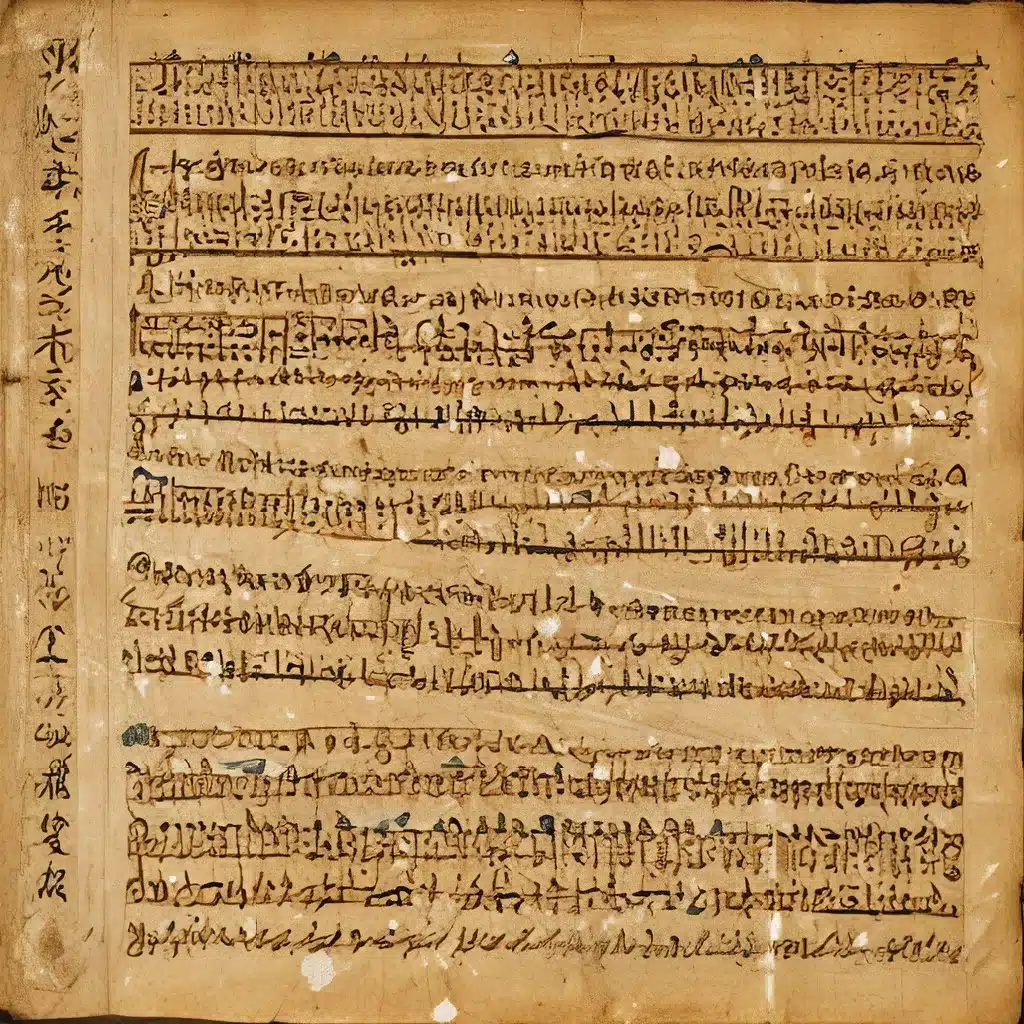
In the vast expanse of human history, the stories of ancient civilizations have long captivated our collective imagination. From the grandeur of the Egyptian pyramids to the enigmatic Mayan glyphs, these enigmatic relics of the past hold the key to unlocking a deeper understanding of our shared heritage. At the forefront of this endeavor are the dedicated scholars known as philologists, who have dedicated their lives to deciphering the language of these ancient texts.
The Challenges of Deciphering Ancient Languages
The task of deciphering ancient languages is no easy feat, as it often involves grappling with a dearth of contextual information and a limited understanding of the cultural nuances that shaped these languages. Imagine trying to learn to read Chinese with no access to educational materials or teachers – that’s the kind of challenge philologists face when confronted with an extinct language. Without the benefit of living speakers or comprehensive language resources, these scholars must rely on meticulous analysis, creative problem-solving, and a deep well of linguistic expertise to unravel the mysteries of the past.
The process of deciphering ancient texts is akin to piecing together a complex puzzle, where each discovered fragment holds the potential to shed light on the bigger picture. Philologists must meticulously examine the available materials, such as inscriptions, manuscripts, and archaeological findings, searching for patterns, recurring symbols, and contextual clues that can help them decipher the underlying language. This painstaking work requires a keen eye for detail, a thorough understanding of linguistic principles, and a relentless dedication to uncovering the truth.
The Groundbreaking Discoveries of Philology
The field of philology has been instrumental in uncovering the hidden histories of ancient civilizations, with numerous groundbreaking discoveries that have profoundly shaped our understanding of the past. One of the most famous examples is the Rosetta Stone, a stone slab discovered in 1799 that contained inscriptions in three different scripts: Egyptian hieroglyphics, Demotic script, and ancient Greek. By studying the parallels between the different scripts, philologists were able to decipher the hieroglyphic language, a breakthrough that paved the way for a deeper understanding of ancient Egyptian culture.
Another remarkable achievement in the annals of philology is the decipherment of Linear B, a script used by the Mycenaean civilization in ancient Greece. For centuries, this written language remained an impenetrable mystery, until the pioneering work of Michael Ventris and John Chadwick in the 1950s. By meticulously analyzing the script and drawing connections to the Mycenaean Greek language, these scholars were able to unlock the secrets of Linear B, revealing invaluable insights into the administrative and cultural practices of this long-lost civilization.
The achievements of philologists go beyond the decipherment of ancient scripts, as they have also played a crucial role in shedding light on the cultural and linguistic diversity of the past. Through their research, they have uncovered the rich tapestry of ancient languages, from the Sumerian cuneiform of Mesopotamia to the Mayan glyphs of Central America, each revealing the unique perspectives and worldviews of the civilizations that created them.
The Collaborative Effort of Deciphering Ancient Texts
The decipherment of ancient texts is not the work of a single scholar, but rather the result of a collaborative effort that spans generations and disciplines. Philologists often work in tandem with archaeologists, anthropologists, and other specialists to piece together the complex puzzle of the past, drawing on a diverse array of knowledge and expertise.
For instance, the decipherment of the Ugaritic language, an ancient Semitic language used in the Levant, was a collaborative effort that involved the contributions of multiple scholars over several decades. Charles Virolleaud, a French philologist, made the initial breakthrough in the 1930s by recognizing the script as a cuneiform-based writing system. Hans Bauer and Bernhard Landsberger subsequently built upon Virolleaud’s work, linking the Ugaritic language to other Semitic languages and expanding our understanding of its grammatical structure and vocabulary.
Similarly, the decipherment of the Mayan glyphs was the culmination of a collective effort spanning several generations of scholars. Yuri Knorosov, a Soviet linguist, was the first to recognize the Mayan writing system as a logosyllabic script, a breakthrough that paved the way for subsequent researchers to delve deeper into the language and its cultural significance.
The Significance of Deciphering Ancient Texts
The significance of deciphering ancient texts cannot be overstated, as it has the power to transform our understanding of human history and the diverse cultural legacies that have shaped our world. By unlocking the secrets of these ancient languages, philologists have shed light on the beliefs, practices, and worldviews of long-vanished civilizations, providing a window into the past that would otherwise remain shrouded in mystery.
This knowledge has profound implications for our understanding of the human experience, as it allows us to appreciate the rich tapestry of cultural and linguistic diversity that has defined our collective history. Moreover, the decipherment of ancient texts has practical applications in fields such as archaeology, anthropology, and linguistics, informing our understanding of ancient societies and enabling us to better contextualize and interpret the material evidence left behind.
As we continue to uncover the secrets of the past, the work of philologists remains essential in shaping our understanding of the human story. Through their dedicated efforts, we can glimpse the unique perspectives and experiences of our ancestors, fostering a deeper appreciation for the shared heritage that binds us all together.


